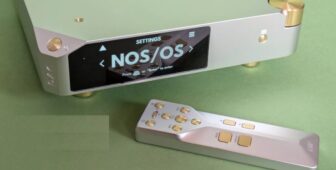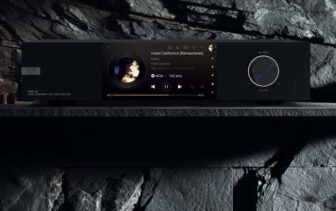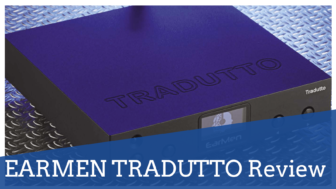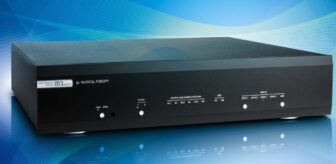Teac UD-505-X and Teac PD-505T Review
No matter how cute these three minis may look, they have something that almost all expensive HiFi giants – except for the dCS stack – can only dream of: an external 10 MHz master clock with a heated quartz oscillator.
By Stefan Schickedanz
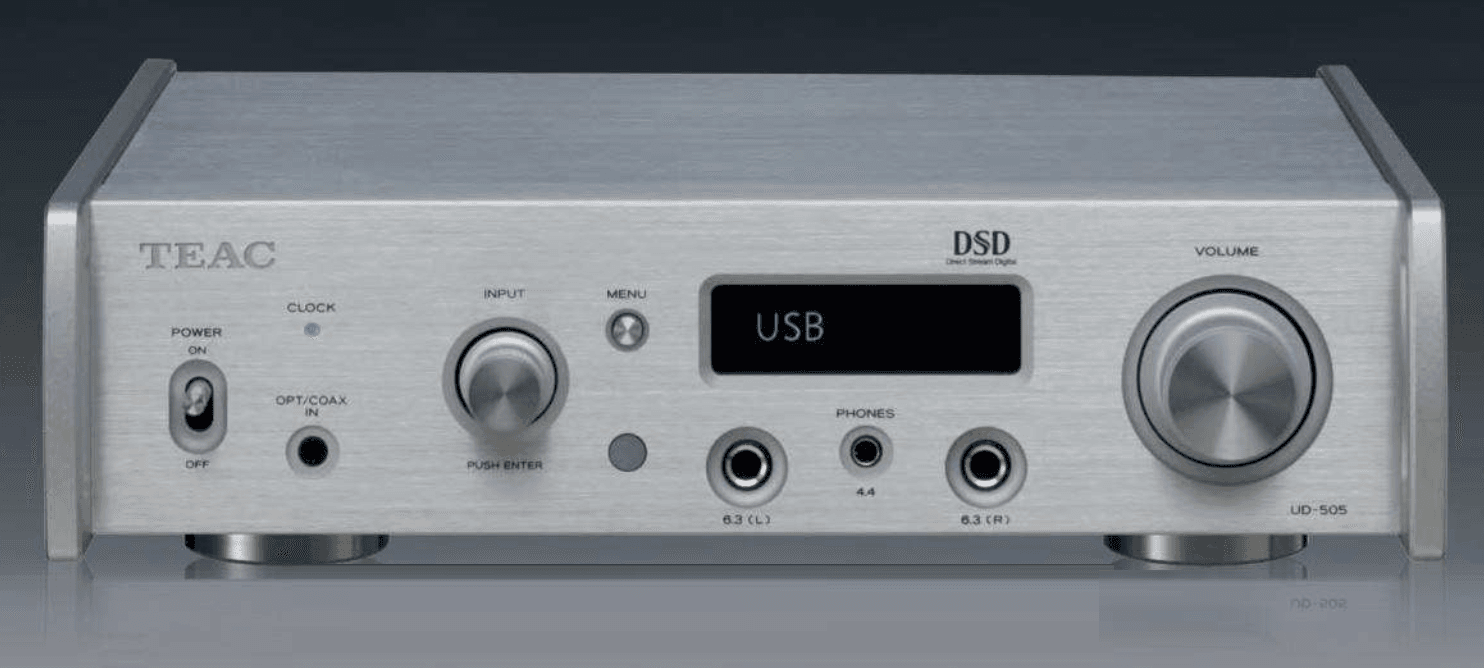
It can happen so quickly. We still had a three-piece desktop audio system for headphones under review. The Lina line from British luxury brand dCS cost a total of over 36,000 Euro. Regardless of the price—an amount for which some people might not even buy a car these days—you could really whet your appetite for compact high-end equipment with the highest aspirations.
The Brits not only managed to shrink their studio-proven Ring DAC to a remarkably small size through clever circuit-board folding. They also provided it with a top-notch streamer plus a very rare extra: an external master clock that generates an ultra-precise clock signal for the word clock. No, this device does not count speaking time as in parliament. It ensures the femtosecond-accurate delineation of individual digitized audio samples.
After all, the CD—like its high-resolution successors—delivers a “mono signal,” meaning a serial data stream in which the values for the left and right channels are transmitted one after the other. The channel assignment then takes place during digital processing before the final digital-to-analog conversion. In the modern recording studio, with its countless digital recorders, processors, synthesizers, and mixers, a central synchronization (akin to an assembly line in a factory) plays a crucial role.
Luxury Extra
While the high-end combo from the British luxury workshop still indulged in the luxury of having the working clock of a single digital component provided by an external master clock with a heated precision oscillator, this time there are two devices using that approach: in the conceptually similar but roughly 10 times cheaper three-piece system from Japan’s Teac—also proven in studio settings—outsourcing the clock is even more of a luxury.
Do it like dCS
On the one hand, the 29-centimeter-wide minis operate in an affordable class, where you might wonder whether you should rather buy a streamer for the money you’d spend on the CG-10M Master Clock Generator (1,600 Euro, approx. $1,760). On the other hand, there is as little to synchronize among the individual digital devices in this chain as there is in the ultra-luxury dCS stack. Although, in addition to the only source—a CD transport PD-505T designed purely as a CD drive—there is an external digital-to-analog converter, the UD-505-X headphone DAC. However, the UD-505-X only utilizes the external clock when used with its USB-B input, with which it can act as an external high-end sound card on a Mac or PC. Teac even offers its own free software (HR Audio Player) for both operating systems. If you do that, however, the PD-505T remains silent.
Ultimately, this relatively large effort boils down to a reassuring feeling for dyed-in-the-wool audiophiles that everything humanly possible has been done to achieve a pure precision clock. After all—and this is another fundamental similarity to the exorbitantly expensive stack from our November issue—Teac’s external master clock, like the 10,000 Euro (approx. $11,000) clock in the dCS stack, uses a sealed quartz oscillator with its own heating element.
Keeping an Eye on Temperature Changes
But Teac goes even further with its relatively affordable CG-10M Master Clock Generator (1,600 Euro, approx. $1,760). The Japanese company actually gave its timer a temperature display designed like a VU meter, allowing you to precisely monitor whether the “oven” is doing its job properly.
Otherwise, there’s nothing else to see on the device’s elegant aluminum front panel—besides the toggle switch found on all three components—other than this display. On the back, at least, there are four BNC sockets that can synchronize two additional devices alongside the UD-505-X and the PD-505T with the 10 MHz clock. Both components that receive the external clock in this chain have an LED labeled simply “Clock” to visually monitor the function. If there is a flawless 50-ohm BNC connection between the master clock and the two audio devices, and external clocking is selected in their menus, each LED will stay lit continuously. If it blinks, action is needed because the function is disrupted.
As for configuring the two playback devices, the UD-505-X headphone DAC has a very practical, self-explanatory rotating push dial. In contrast, the CD transport only has a small button to call up the menu. The Play/Pause button and the two Skip buttons on the PD-505T then serve a dual role for menu input. It’s not as intuitive as on the UD-505-X and is made a bit trickier by the fact that older users might need their reading glasses in dim light to discern the tiny labels above the small control buttons—until they memorize their positions by heart. The UD-505-X’s second, slightly larger rotary knob on the front panel controls the volume. The fine little headphone amp achieves this using the high-precision, balanced Teac QVCS volume control system (“Quad Volume Control System”), enabling precise 0.5 dB steps with low noise and high channel accuracy.
Whether the unbalanced RCA outputs or the balanced XLR outputs on the rear panel follow the volume control in sync with the three headphone ports on the front or whether they deliver a fixed output level independently can be set in the UD-505-X’s menu as needed. This means the device can be used as a headphone amp, a preamp, or a DAC for a full amplifier.
A Converter of World-Class
The latter function may remain somewhat of an exception given the system concept, but from a purely technical standpoint, this mini-DAC offers compelling arguments. It converts PCM digital signals at up to 32 bit/768 kHz as well as DSD512 when served via its USB-B port. The maximum resolution for audio data delivered via S/PDIF is 24 bit/192 kHz—whether optical or coaxial. If that’s not enough, you can upsample PCM to 32 bit/384 kHz. There is also upsampling for DSD data, up to 24.5 MHz if you wish. Together with the seven variable filter characteristics, this promises some exciting listening comparisons for audiophiles on long winter evenings.
Regarding the DAC chip technology, Teac relies on two ESS ES9038Q2M chips in dual-mono configuration in the UD-505-X. However, there are also elements in the analog section that will make high-end enthusiasts’ hearts beat faster: the mini is equipped with the luxury of separate toroidal transformers for each channel.
For headphone connections, the front of the UD-505-X offers one balanced 4.4 mm 5-pin Pentaconn jack and two 6.3 mm jacks (which can operate in balanced or unbalanced mode). There is also an optical 1/8-inch mini input for compatible mobile devices such as high-resolution audio players.
Quest for Transparency
During the listening test, something interesting happened. It quickly became evident that this Teac trio is not only conceptually similar to the considerably more expensive dCS stack, but it also pays homage to the same ideals sonically. Each component alone, as well as the entire chain, revealed an extremely neutral tuning. This tonal orientation was apparent whether you used the UD-505-X USB DAC/headphone amp with the PD-505T CD transport as the source to feed power amps or active speakers via the variable outputs—or after switching to a fixed output level into an integrated amp such as the T+A PA 3100 HV. And, unsurprisingly, this was true whether with or without the CG-10M Master Clock Generator synchronization. Its homeopathic effect manifested itself—borrowing the phrase used for the dCS clock—like Shell V Power 100-octane fuel in a high-performance engine. In other words, the sub-bass had a bit more contour, and the air between individual instruments increased slightly.
Overall, the tuning of the combination of transport and DAC was on a very neutral, lively side. In the bass range, speed and precision took precedence over volume. However, the components avoided drifting into a cool tonality. They also harmonized well with the Beyerdynamic T5p over-ear headphones, themselves lean and crisp-sounding, or as a source for the also highly resolving and ultra-transparent ProAc K1 paired with the T+A amp. With both headphones and speakers, there was excellent stability and three-dimensionality of the soundstage, with impressively precise imaging.
Thus, singer-songwriter music like Sara K. already sounded extremely open and transparent. Meanwhile, pop tracks grooved with great timing. But the quintessence of all these positive attributes became highly concentrated on classical recordings such as Johann Kuhnau’s “Complete Sacred Works 1,” conducted by Gregor Meyer. Especially over loudspeakers, it not only gave goosebumps but also conveyed the feeling of being able to walk around the sharply contoured performers.
CONCLUSION:
Even the small yet extremely refined dCS stack from the last issue exerted an admittedly decadent but ultimately irresistible appeal. Mini components with maximum technical ambition are for discreet connoisseurs—people who would rather wear Swiss Zimmerli underwear than display a big-name logo on their shirt. Anyone who was recently captivated by the idea of desktop audio with an exceptional standard and a heated master clock now has a chance to enjoy it without having to mortgage the house, thanks to this trio from Teac.
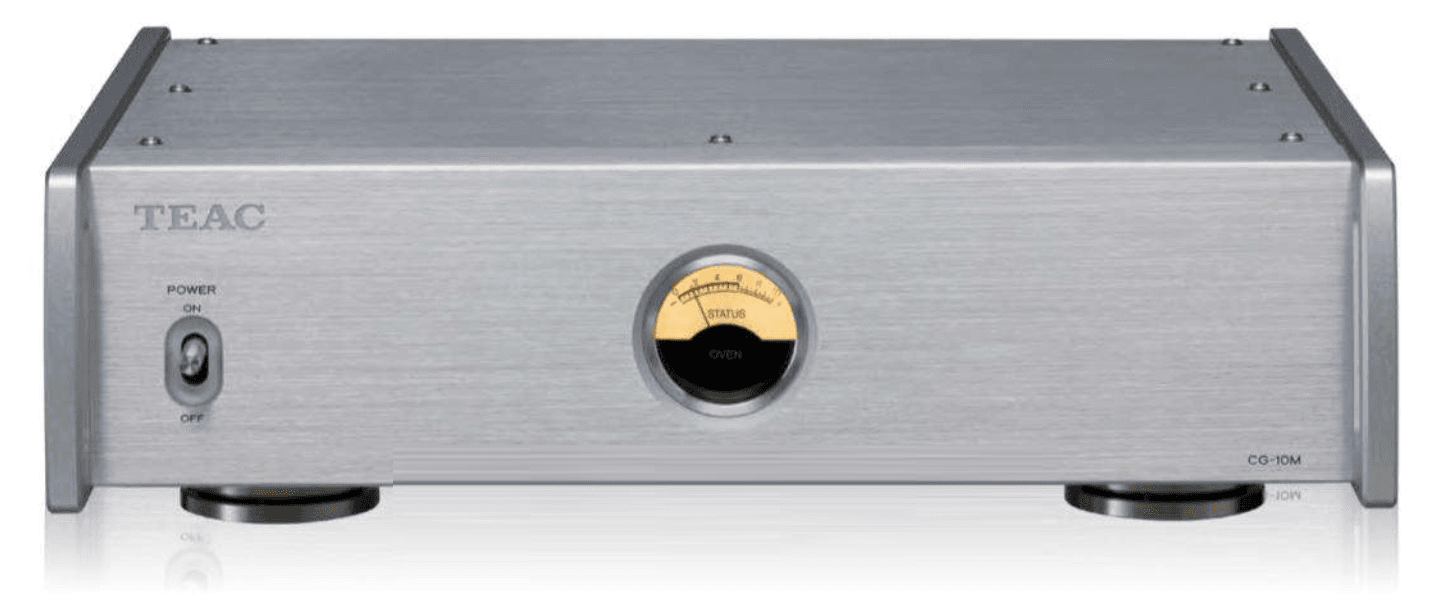
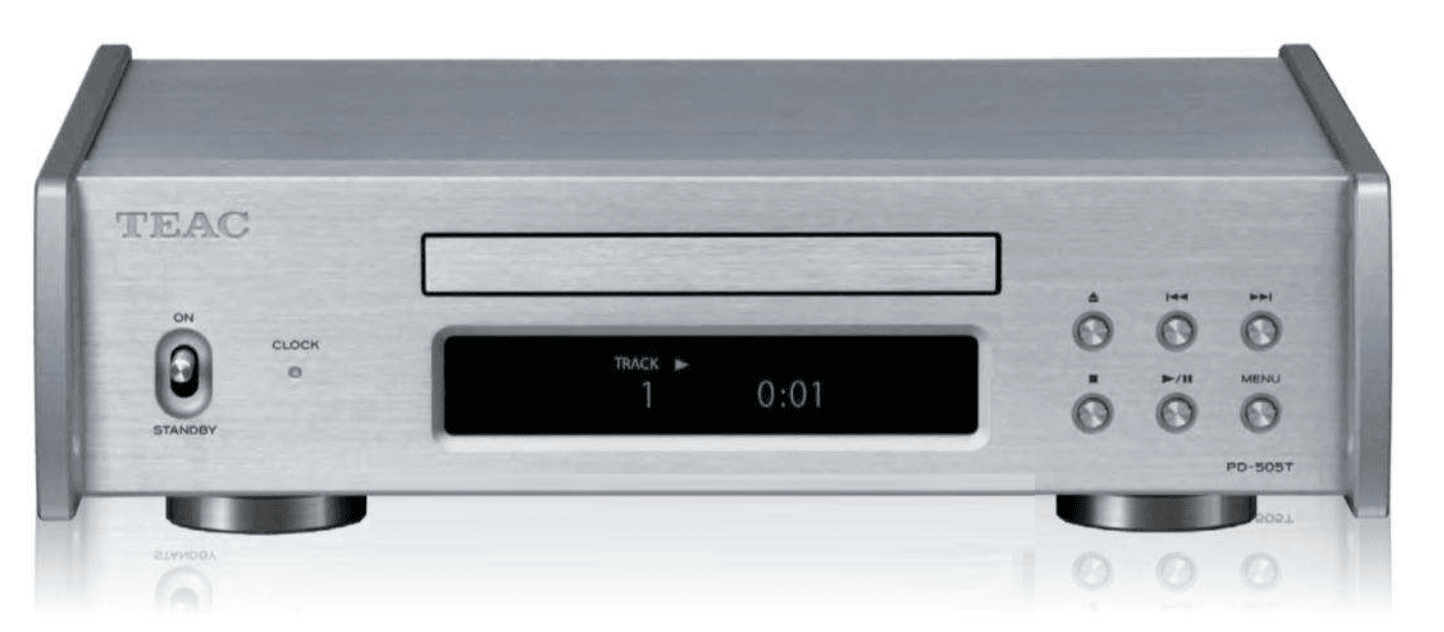
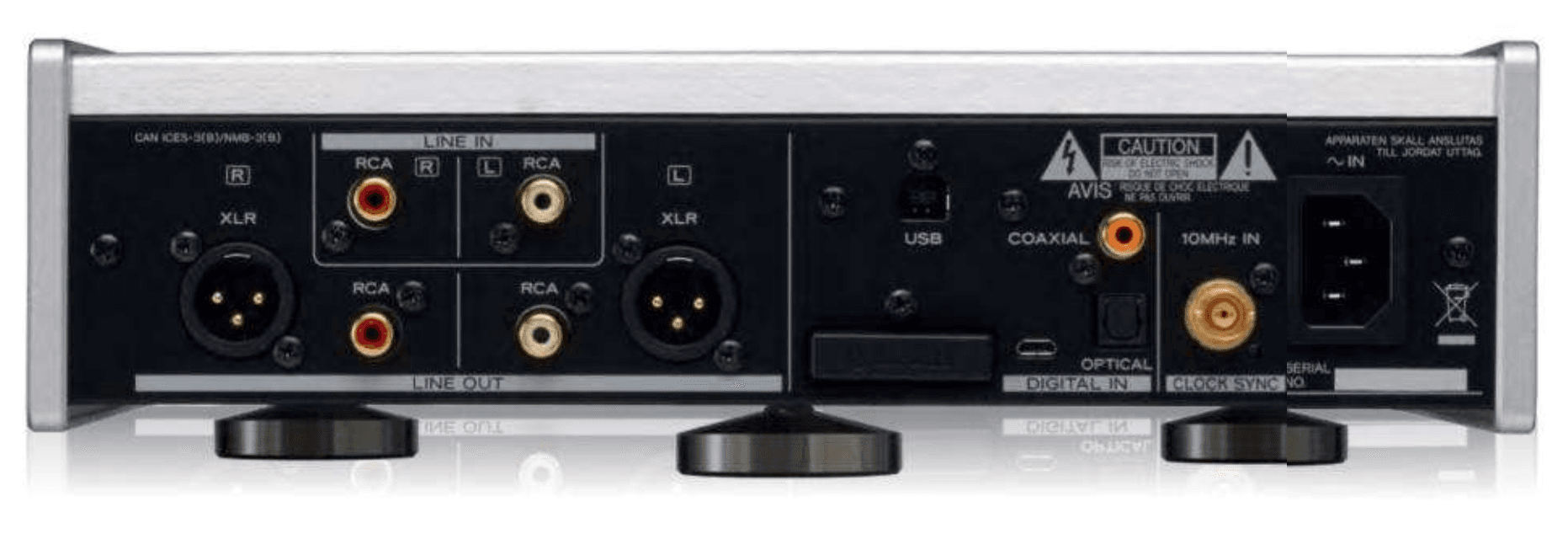
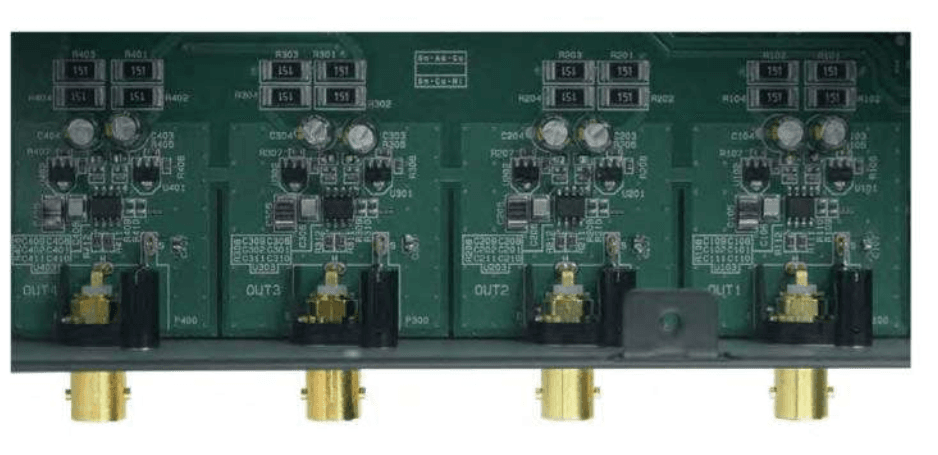
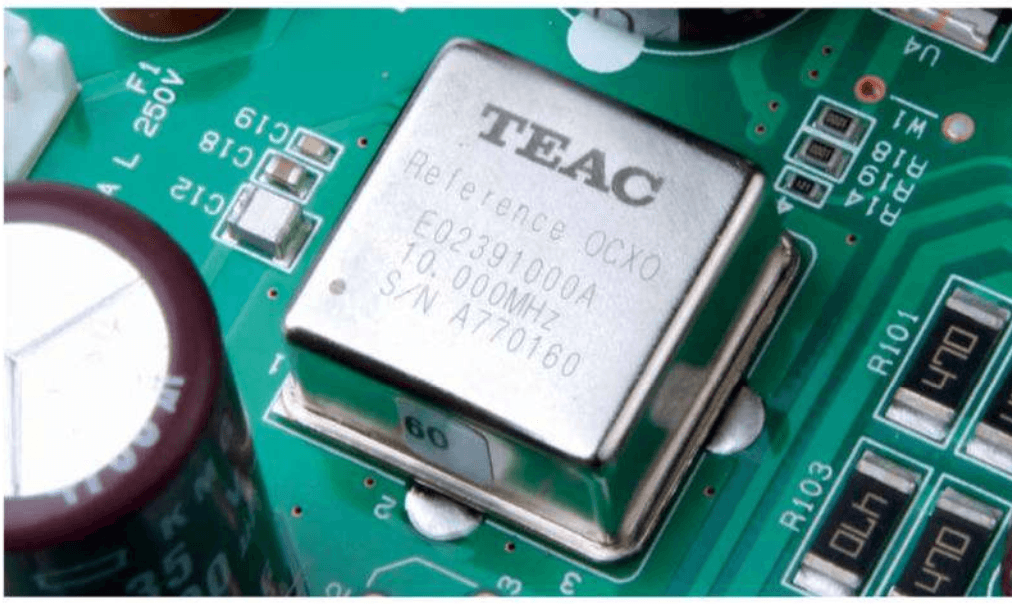
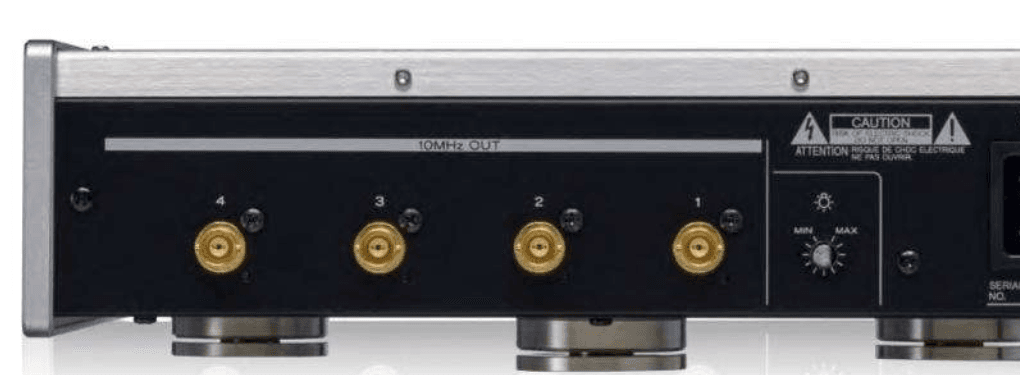
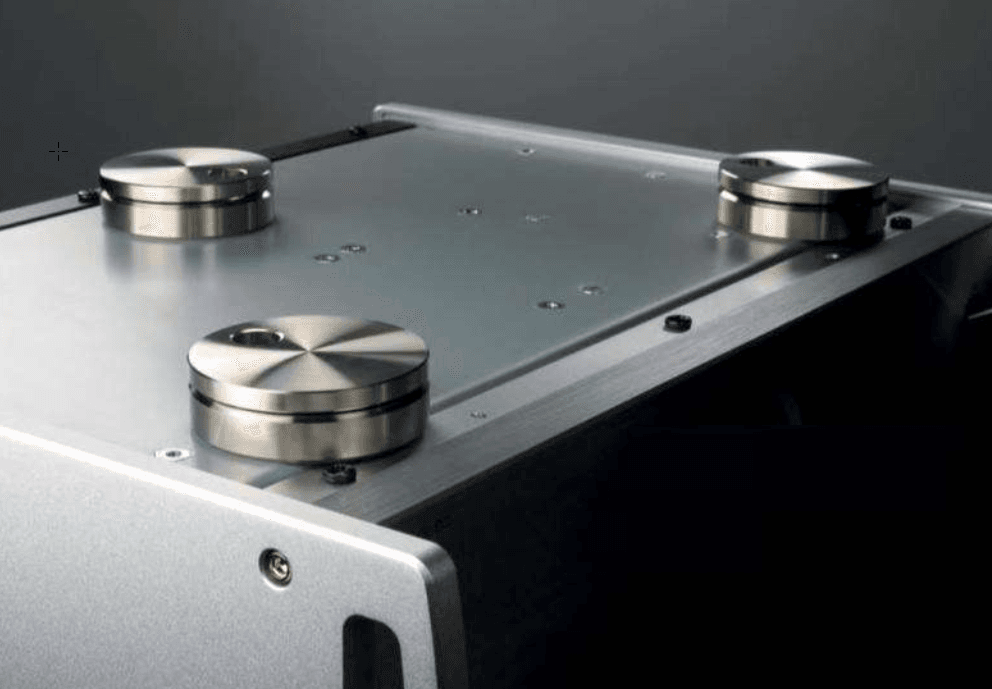
Teac UD-505-X TECHNICAL DATA
Website: eu.teac-audio.com
Price: 1300 Euros (~$1400)
Warranty: 2 years
Dimensions (W × H × D): 29 × 8.5 × 24.9 cm
Weight: 4.1 kg
Digital Inputs
- USB/S/PDIF Coax: ✔️
- TOSLink/AES/EBU/BNC: ✔️ / ❌ / ❌
- Bluetooth/Airplay: ❌ / ❌
- HDMI: ❌
Supported Sampling Rates
- TOSLink: 192 kHz
- AES/EBU, S/PDIF: 192 kHz
- USB: 32 Bit / 768 kHz
- DSD: 512
Analog Inputs
- Cinch/XLR/Phono: ✔️ / ❌ / ❌
Digital Outputs
- S/PDIF Coax/Other: ❌ / ❌
Analog Outputs
- Cinch/XLR: ❌ / ✔️
Features
- Remote Control: ✔️
- Headphone Output: ✔️
- Display (kHz/Bit): ✔️ / ❌
- Switchable Filters: ✔️
- Volume Control: ✔️
- Special Feature: Master-Clock Input
Pros & Cons
✅ Pros:
- Extreme neutrality
- Three headphone outputs
- Can be used as a preamp
❌ Cons:
- Only one analog input
Ratings (Converted to 10-Point Scale)
- Sound Quality (Cinch/XLR): 10/10
- Features: 9/10
- Usability: 9/10
- Build Quality: 9/10
Final Verdict
- Overall Score: 9.7/10 (156 Points)
- Price/Performance: Very Good
PROS / CONS
extreme neutrality
three headphone outputs
can be used as a preamp
only one analog input
RATING: 8/10 (GOOD)

AUDIO BENCHMARK

Teac UD-505
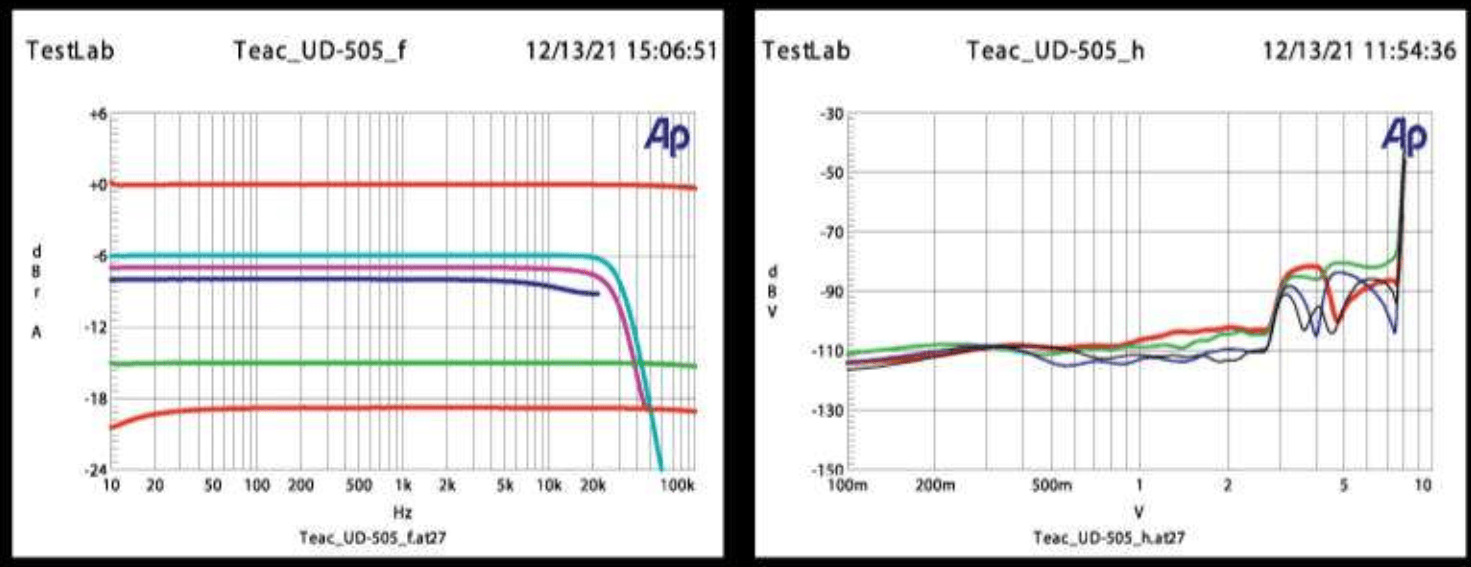
Left: early filtering with digital sound (blue, fs = 44.1 kHz), minimal bass roll-off at the headphone output with 32 Ω (red, bottom). Right: distortion harmonics k2–k5, extremely clean up to 3 V. SNR: Line (RCA/XLR): 102/109 dB (0.5/2 V); digital (RCA/XLR): 111/114 dB (2/4 V). 1/4″ jack: output impedance 19 Ω, 600/170 mW at 32/300 Ω (4.4/7.2 V). Pentaconn: 36 Ω, 690/420 mW at 32/300 Ω. Power consumption: 0.2/9 W.
Teac UD-505 TECHNICAL DATA
Website: eu.teac-audio.com
Price: 1000 Euros (~$1080)
Warranty: 2 years
Dimensions (W × H × D): 29 × 8.5 × 24.9 cm
Weight: 4 kg
Features
- Random Track Selection: ✔️
- Playback Time Display (Track/CD/Program): ✔️ / ✔️ / ❌
- Remaining Time Display (Track/CD/Program): ✔️ / ✔️ / ❌
- Repeat Mode (CD/Track/A–B): ✔️ / ✔️ / ❌
- Remote Control: ✔️
- Output (Adjustable/Fixed): ❌ / ❌
- Analog Outputs (Cinch/XLR): ❌ / ❌
- Digital Outputs (Cinch/Optical): ✔️ / ✔️
- Headphone Output (Adjustable): ❌
- Digital Inputs (Cinch/Optical/USB): ❌ / ❌ / ❌
- USB Host / iPod Support: ❌ / ❌
- Special Feature: Master-Clock Input
Pros & Cons
✅ Pros:
- High-quality CD drive
- Master-Clock connection
- Compact size
❌ Cons:
- No special offer for a standalone CD drive
Ratings
- Drive Performance: Not rated
- Features: 8/10
- Usability: 9/10
- Build Quality: 9/10
Final Verdict
- Price/Performance: Good
PROS / CONS
high-quality drive
master clock connection
small footprint
for a pure transport, not exactly a bargain
RATING: 8/10 (GOOD)

AUDIO BENCHMARK
PRICE/PERFORMANCE: 8/10 (GOOD)



